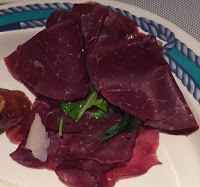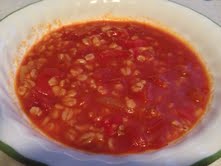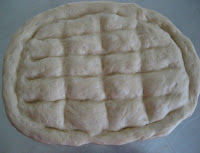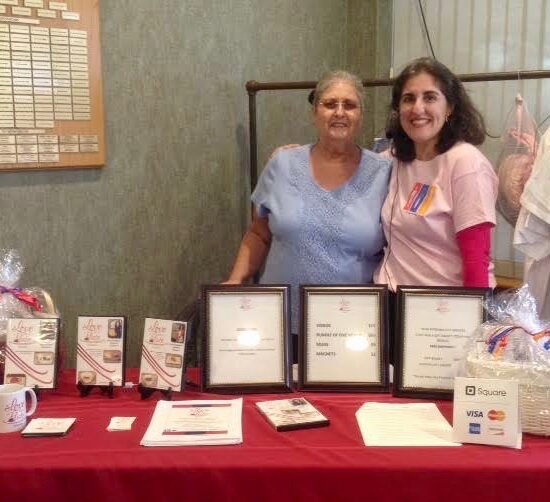We
just got back from a Caribbean cruise. We had great fun despite a choppy
sea, a midnight fire alarm and an island
tour of a place called Hell that seemed to have been appropriately named.
just got back from a Caribbean cruise. We had great fun despite a choppy
sea, a midnight fire alarm and an island
tour of a place called Hell that seemed to have been appropriately named.
 |
| Bresaola |
So
what was the fun part? We enjoyed the shows and long strolls on the deck. Robyn
luxuriated in the spa, while I nestled into our private balcony with a good
book.
And,
of course, we ate like mad.
Everybody
eats too much on a cruise, and there’s no point denying it much less making
excuses. Good food well-prepared is one of a cruise ship’s main attractions.
eats too much on a cruise, and there’s no point denying it much less making
excuses. Good food well-prepared is one of a cruise ship’s main attractions.
Fortunately,
it is a well-established fact that nothing you eat on a cruise counts against
normal dietary restrictions. I actually checked that with unimpeachable
scientific sources before we left.
it is a well-established fact that nothing you eat on a cruise counts against
normal dietary restrictions. I actually checked that with unimpeachable
scientific sources before we left.
At
least, I meant to.
least, I meant to.
Our
ship, the Emerald Princess, had a menu as diverse as its multinational crew. We
enjoyed an array of meats and seafood cooked in almost every ethnic style, from
Asian to Latin to down-home American.
ship, the Emerald Princess, had a menu as diverse as its multinational crew. We
enjoyed an array of meats and seafood cooked in almost every ethnic style, from
Asian to Latin to down-home American.
The
notable exception was anything Middle Eastern, except a few Greek olives and a
dollop of hummus on flatbread served with our wine.
notable exception was anything Middle Eastern, except a few Greek olives and a
dollop of hummus on flatbread served with our wine.
We
were resigned to this familiar-food drought until near the end of our journey,
when we explored the late-night buffet for some cheese and fruit to cap the
evening. That’s when my jaw (but luckily not my plate) dropped.
were resigned to this familiar-food drought until near the end of our journey,
when we explored the late-night buffet for some cheese and fruit to cap the
evening. That’s when my jaw (but luckily not my plate) dropped.
Well,
obviously it couldn’t be basturma but it sure looked real. I put a few slices
on my plate and carried it back to the table where Robyn was waiting.
obviously it couldn’t be basturma but it sure looked real. I put a few slices
on my plate and carried it back to the table where Robyn was waiting.
“Is
this really what it looks like?” I asked.
this really what it looks like?” I asked.
Her
answer was a conditional “no.” The condition was that I had to hurry back to
get more because it was really good and it was just that close to the real
thing: thinly sliced and supremely tender.
answer was a conditional “no.” The condition was that I had to hurry back to
get more because it was really good and it was just that close to the real
thing: thinly sliced and supremely tender.
Even
the basic seasoning was right. Nothing was missing except basturma’s thick,
pungent coating of chaimen spices.
the basic seasoning was right. Nothing was missing except basturma’s thick,
pungent coating of chaimen spices.
When
I returned to the buffet, I spotted the label above the platter: bresaola. Any semi-sophisticated foodie would recognize that
immediately. Of course, I had no clue. I did have my iPhone, but it would have
cost as much as a year’s supply of basturma to get the answer at the high-seas
Wi-Fi rates.
I returned to the buffet, I spotted the label above the platter: bresaola. Any semi-sophisticated foodie would recognize that
immediately. Of course, I had no clue. I did have my iPhone, but it would have
cost as much as a year’s supply of basturma to get the answer at the high-seas
Wi-Fi rates.
So
I waited until we docked the next morning to Google-up the answer. Bresaola is
Italian air-dried, salted beef fillet. Count it among the many basturma variations that have
turned up wherever the peoples of the Near and Middle East have traveled,
settled or conquered.
I waited until we docked the next morning to Google-up the answer. Bresaola is
Italian air-dried, salted beef fillet. Count it among the many basturma variations that have
turned up wherever the peoples of the Near and Middle East have traveled,
settled or conquered.
Thinking
about this made me curious about where basturma came from. The short answer is
that, like just about everything else on a Near Eastern table, you could
wrestle up a powerful appetite while arguing about who had the idea first.
about this made me curious about where basturma came from. The short answer is
that, like just about everything else on a Near Eastern table, you could
wrestle up a powerful appetite while arguing about who had the idea first.
In
Armenian Food: Fact, Fiction & Folklore, Irina Petrosian and David
Underwood offer two common tales of basturma’s origin.
Armenian Food: Fact, Fiction & Folklore, Irina Petrosian and David
Underwood offer two common tales of basturma’s origin.
In
the first, Turkic warriors from Central Asia put slabs of beef under their
saddles, allowing the pressure and the horse’s perspiration to cure the meat. That’s
not very appetizing, but the authors say the story is favored by many food
writers because it makes basturma sound exotic.
the first, Turkic warriors from Central Asia put slabs of beef under their
saddles, allowing the pressure and the horse’s perspiration to cure the meat. That’s
not very appetizing, but the authors say the story is favored by many food
writers because it makes basturma sound exotic.
Greeks,
however, say basturma evolved from a Byzantine salt-curing method called
pastron that originated in what later became the city of Kayseri. Under Ottoman
rule, the Greek pastron became Turkish pastirma.
however, say basturma evolved from a Byzantine salt-curing method called
pastron that originated in what later became the city of Kayseri. Under Ottoman
rule, the Greek pastron became Turkish pastirma.
“Armenian
claims to basturma are based on the fact that they were known as the most
skillful basturma-makers in the Middle East,” the authors write. “In Kayseri,
the Mecca of basturma, Armenians had a monopoly on the basturma business. An
Armenian family name, Basturmajian, is living proof of historical
meat-processing skills.”
claims to basturma are based on the fact that they were known as the most
skillful basturma-makers in the Middle East,” the authors write. “In Kayseri,
the Mecca of basturma, Armenians had a monopoly on the basturma business. An
Armenian family name, Basturmajian, is living proof of historical
meat-processing skills.”
I
can’t testify to any of this, as I have no meat-processing skill. But I do
have considerable basturma-eating skill, and you can trust me on this: If
you’re ever in a ship in the middle of the Caribbean Sea, head for the bresaola.
can’t testify to any of this, as I have no meat-processing skill. But I do
have considerable basturma-eating skill, and you can trust me on this: If
you’re ever in a ship in the middle of the Caribbean Sea, head for the bresaola.
You
won’t be disappointed.
won’t be disappointed.
(Visited 283 times, 1 visits today)




